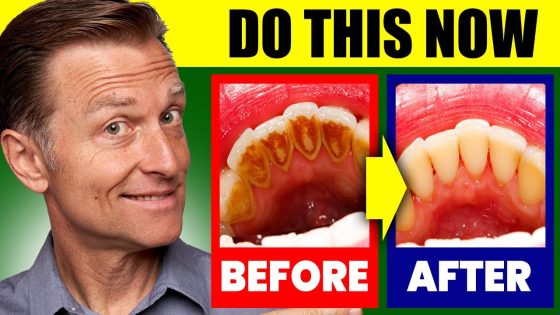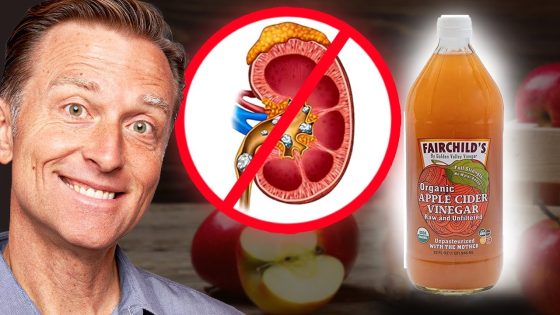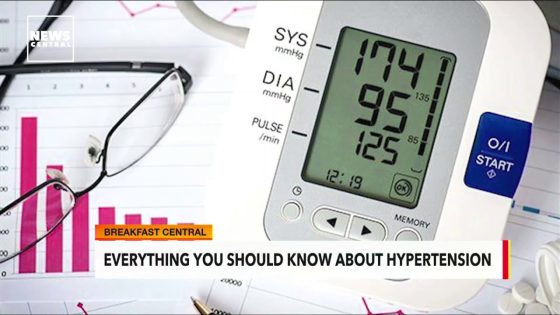Is it dangerous to take high amounts of vitamin D3? Here is what you should know.
Check out Dr. Berg’s D3 & K2 Vitamin Here: 🛒https://drbrg.co/3Nx1Shr OR https://amzn.to/3PW340X
DATA:
https://www.ncbi.nlm.nih.gov/pmc/articles/PMC2665033/
00 Introduction: Is it bad to take a lot of vitamin D?
10 What does “IU” stand for?
38 Are high amounts of vitamin D3 dangerous?
1:50 How much vitamin D you need and why
7:57 What is considered a toxic amount of vitamin D?
9:42 Learn more about vitamin D toxicity!
Are there risks of taking 10,000 IU of vitamin D3? In my opinion, there is a bigger risk of not taking “high” amounts of vitamin D3.
IU is the abbreviation for international units. 10,000 IU of vitamin D3 is equivalent to under one milligram.
The RDAs for vitamin D are between 600 to 800 IU. But, the great majority of people are deficient in vitamin D. The current RDAs for vitamin D are outdated and are based on old research related to preventing bone loss.
Every cell in the body has receptors for vitamin D, and the functions of vitamin D are vast. Vitamin D isn’t even really a vitamin. It’s a hormone. It acts very similarly to cortisol (another hormone) as an anti-inflammatory but without side effects.
In my opinion, a person really needs 10,000 IU of vitamin D3 as a maintenance dose. This has to do with there being a lot of different things that stop vitamin D from going into your body.
Another thing we need to look at when it comes to vitamin D is a person’s genes. I recently had 21 different individuals’ DNA tested, and 100 percent of them had at least one genetic problem with vitamin D absorption.
I believe that 10,000 IU of vitamin D3 is not toxic and is needed to penetrate some of the big barriers that keep people from getting enough vitamin D3.
The amount of vitamin D that could cause a toxic effect is still being debated. But, according to the research I’ve found, it would take hundreds of thousands of international units for months to create vitamin D toxicity.
However, as a precaution, be sure to consume plenty of water (2.5 liters a day), take other nutrients that support vitamin D absorption, and take nutrients that protect you against hypercalcemia (the main potential toxic effect).
Dr. Eric Berg DC Bio:
Dr. Berg, age 58, is a chiropractor who specializes in Healthy Ketosis & Intermittent Fasting. He is the author of the best-selling book The Healthy Keto Plan, and is the Director of Dr. Berg Nutritionals®. He no longer practices, but focuses on health education through social media.
Follow Me On Social Media:
Facebook: https://bit.ly/FB-DrBerg
Instagram: https://bit.ly/IG-DrBerg
Anchor: https://bit.ly/Anchor-DrBerg
TikTok: https://bit.ly/TikTok-DrBerg
Disclaimer:
Dr. Eric Berg received his Doctor of Chiropractic degree from Palmer College of Chiropractic in 1988. His use of “doctor” or “Dr.” in relation to himself solely refers to that degree. Dr. Berg is a licensed chiropractor in Virginia, California, and Louisiana, but he no longer practices chiropractic in any state and does not see patients so he can focus on educating people as a full-time activity, yet he maintains an active license. This video is for general informational purposes only. It should not be used to self-diagnose and it is not a substitute for a medical exam, cure, treatment, diagnosis, prescription, or recommendation. It does not create a doctor-patient relationship between Dr. Berg and you. You should not make any change in your health regimen or diet before first consulting a physician and obtaining a medical exam, diagnosis, and recommendation. Always seek the advice of a physician or other qualified health provider with any questions you may have regarding a medical condition.
#keto #ketodiet #weightloss #ketolifestyle
Thanks for watching! I hope this helps you better understand vitamin D3. I’ll see you in the next video.















Hcndrf
5 months agobuy lipitor 40mg generic purchase lipitor without prescription lipitor order
Ctbhrk
5 months agooral atorvastatin 10mg lipitor 10mg without prescription buy lipitor generic
Ooftum
5 months agooral lipitor 10mg atorvastatin 10mg price lipitor 80mg canada
Yclybq
5 months agolipitor 40mg canada buy generic atorvastatin purchase lipitor pill
Zymrdd
5 months agobuy generic lipitor online buy atorvastatin online lipitor 40mg uk
Ruhowg
5 months agooral lipitor 20mg lipitor where to buy lipitor 40mg canada
Eihzdh
5 months agocheap atorvastatin 80mg lipitor 10mg usa buy lipitor 40mg for sale
Xrelca
4 months agoorder ciprofloxacin 1000mg pill – baycip us order augmentin 1000mg generic
Civpyh
4 months agobuy ciprofloxacin 1000mg pill – buy trimethoprim medication where to buy clavulanate without a prescription
Xsvxql
4 months agobuy ciprofloxacin 500mg – trimox order online
erythromycin canada
Wlpqmu
4 months agoorder generic flagyl 200mg – buy cleocin 300mg for sale buy azithromycin online cheap
Tosbzh
4 months agocost stromectol – ciplox 500mg generic order sumycin 500mg without prescription
Wdqcws
4 months agowhere can i buy valtrex – order mebendazole 100mg pill buy acyclovir for sale
Rcdaet
4 months agopurchase ampicillin online acticlate pill amoxil where to buy
Feleng
4 months agoorder metronidazole 200mg without prescription – cefaclor 500mg pill azithromycin price
Pumonc
4 months agobuy lasix diuretic – buy captopril 25mg pills cost capoten 120mg
Be the first to comment